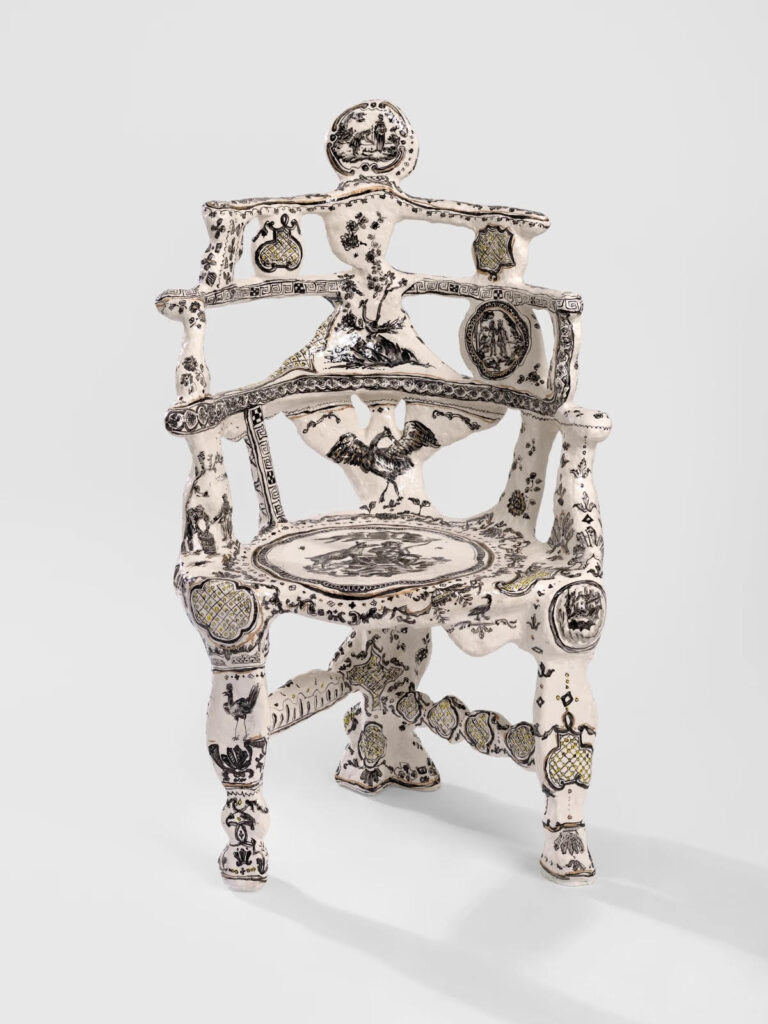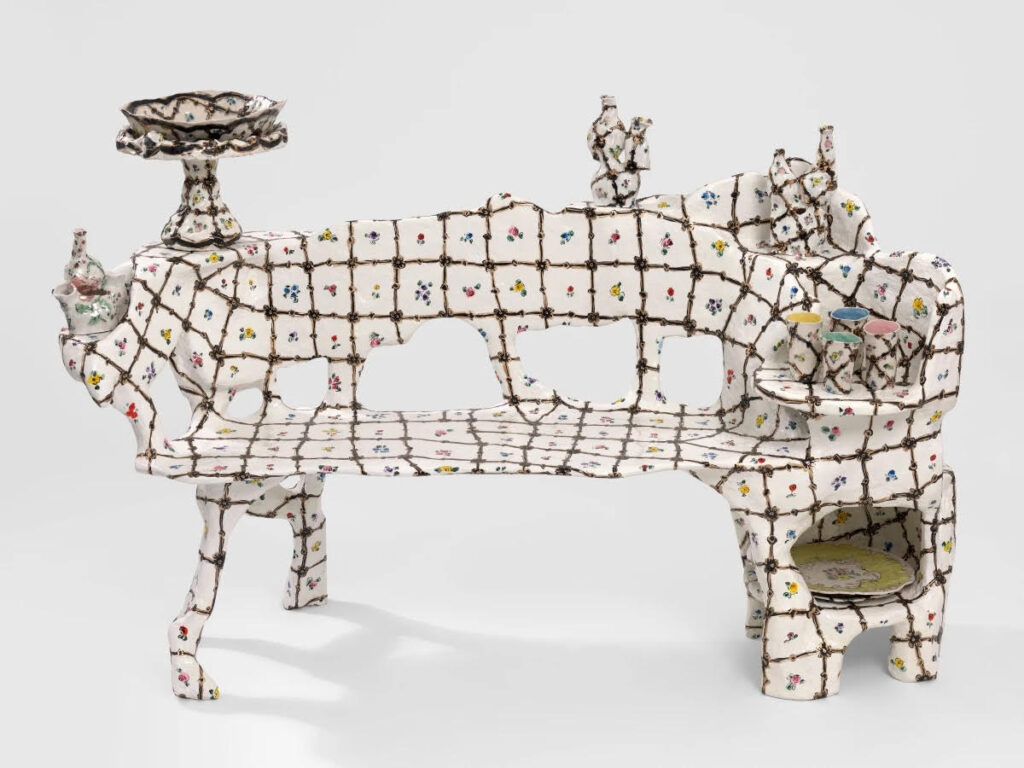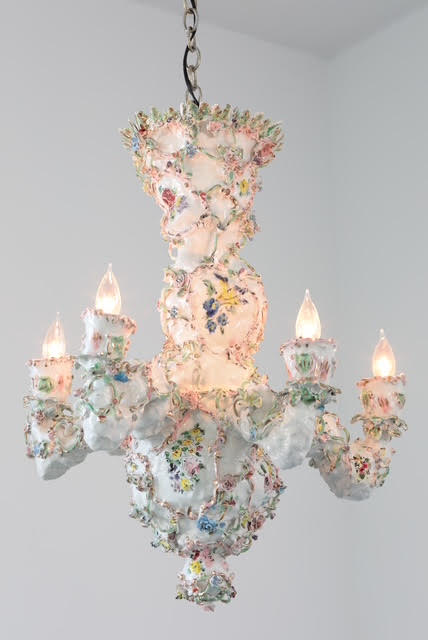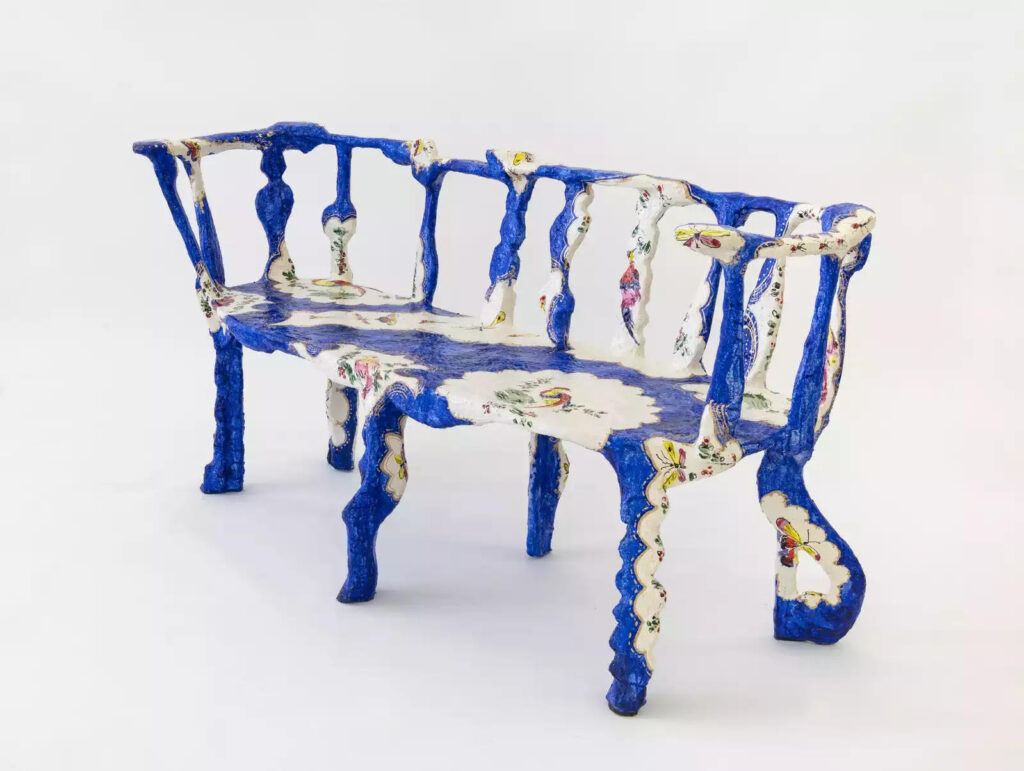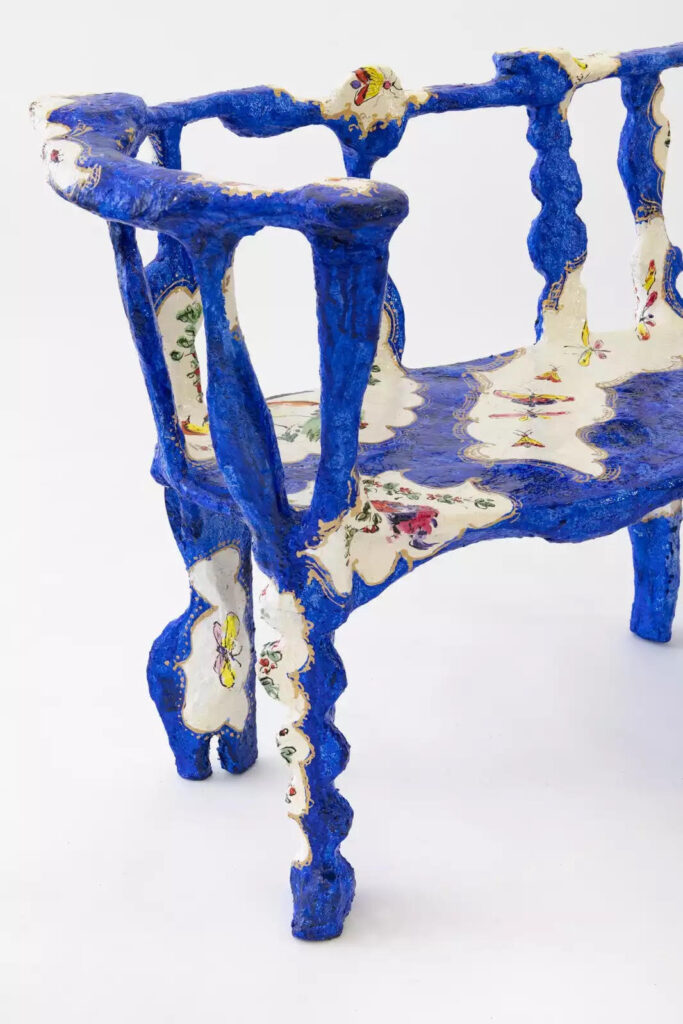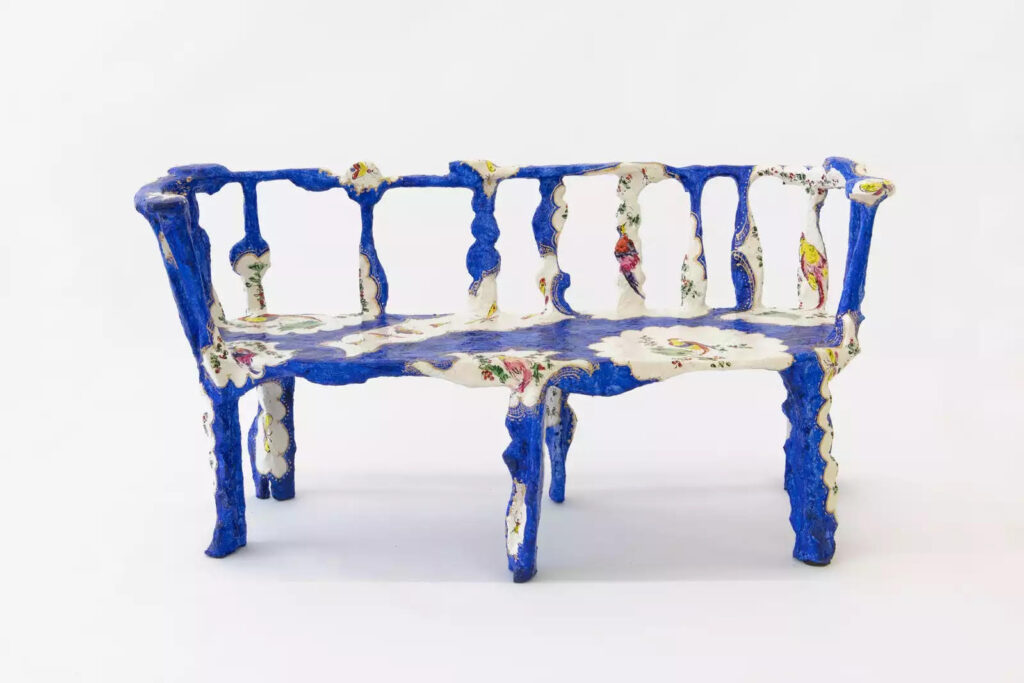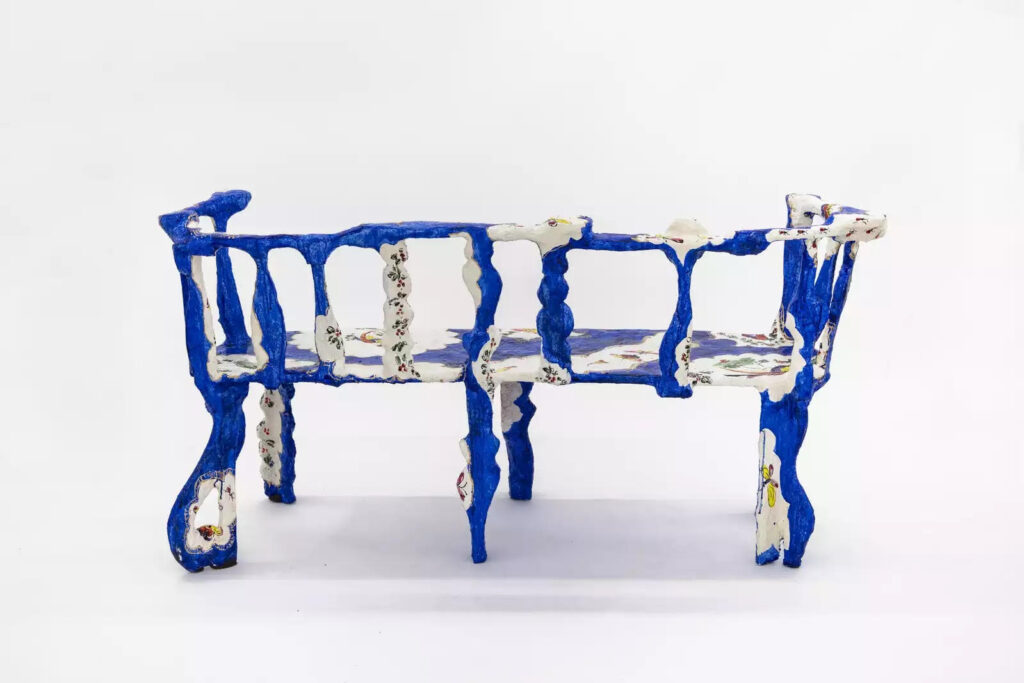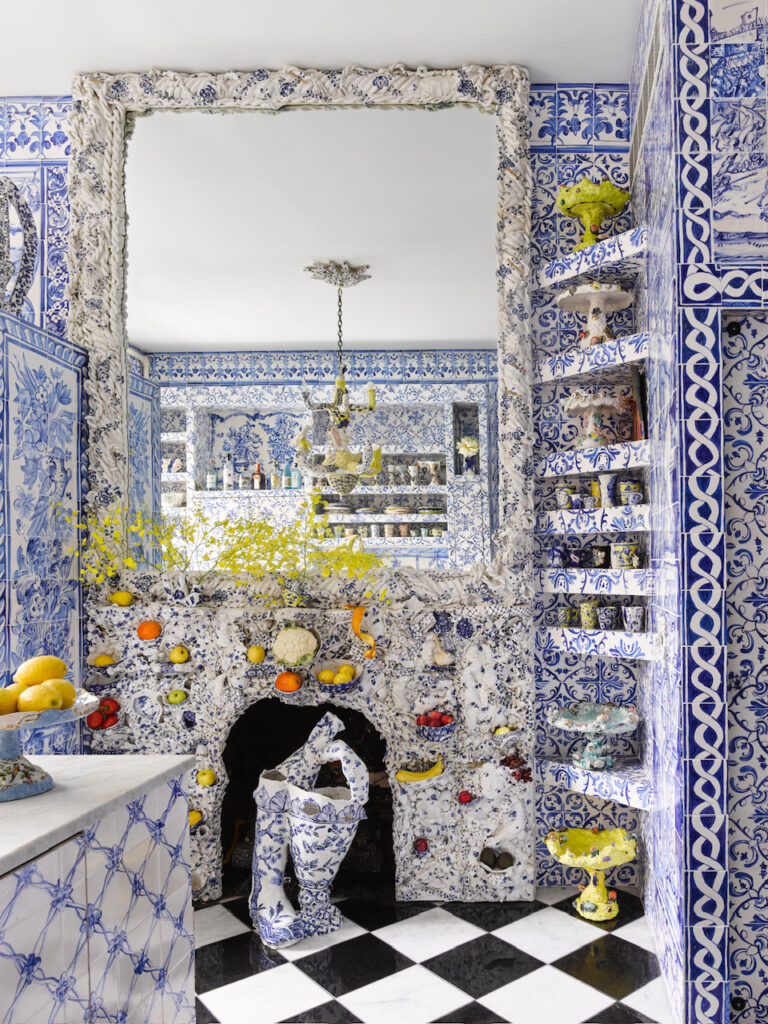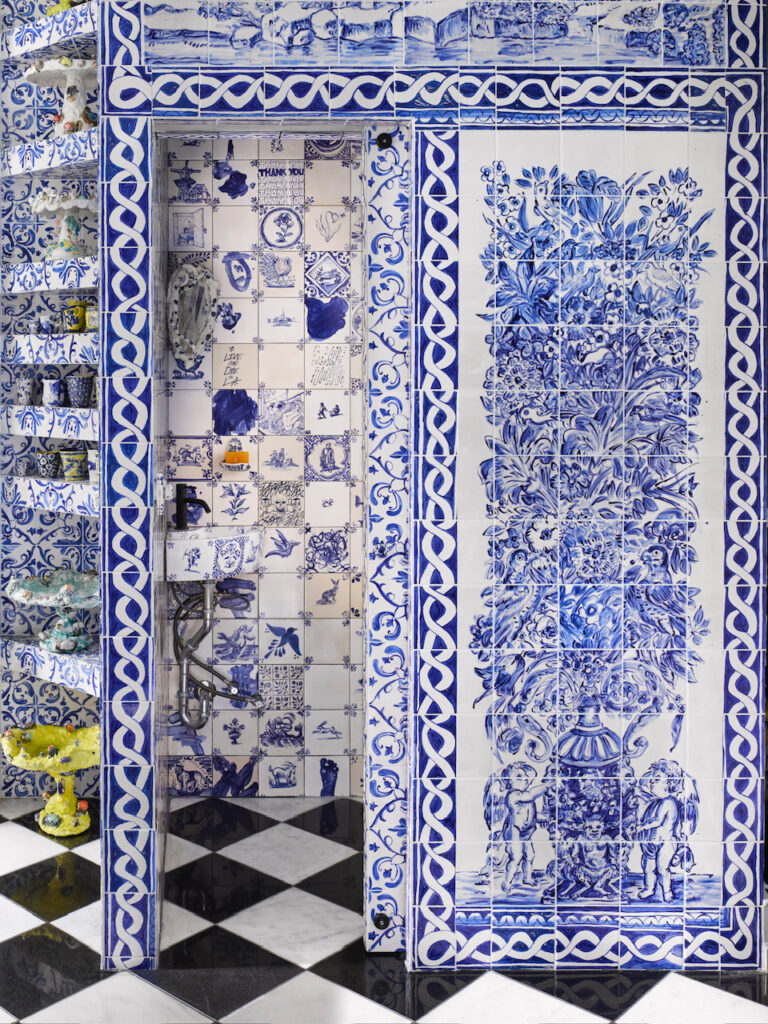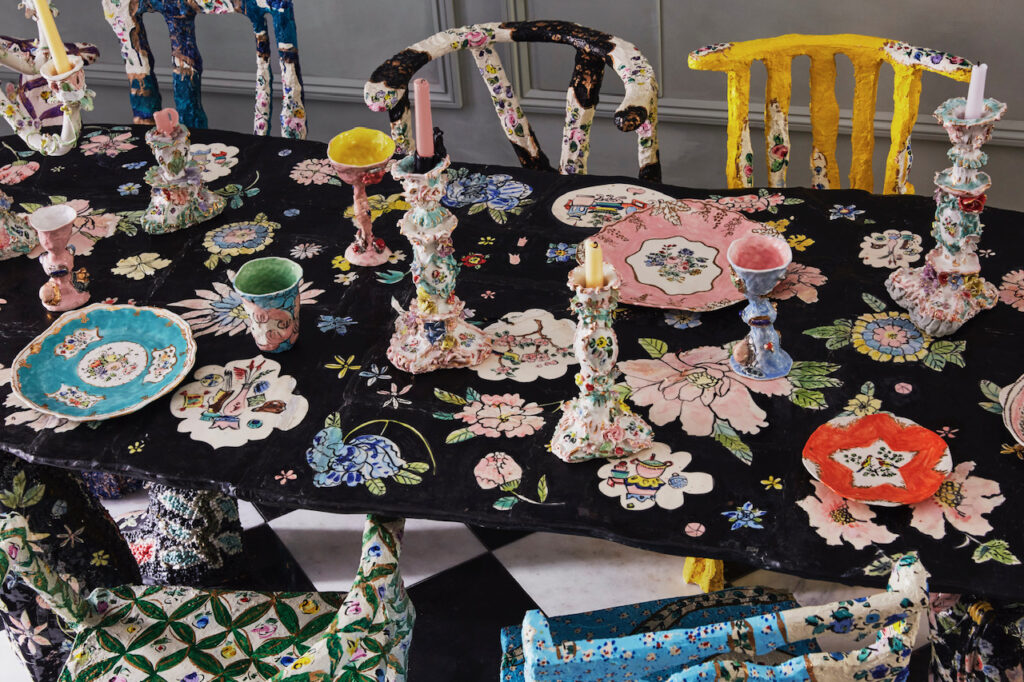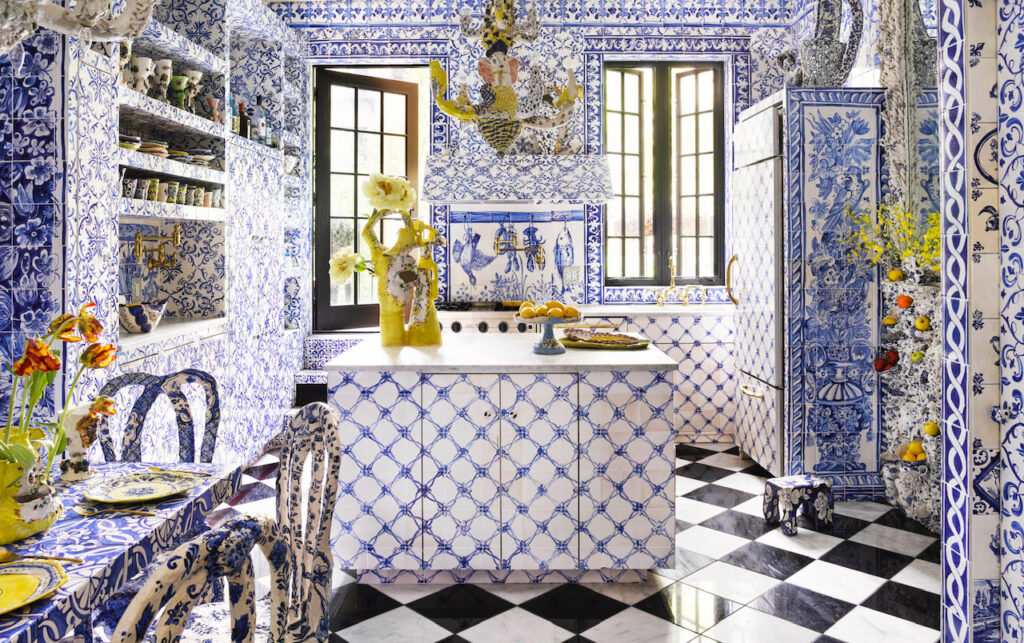
To intermingle the sensibilities and exuberant decoration and vocabulary of the Rococo with contemporary design sounds like an impossible task. After all, as demonstrated by the Cooper Hewitt’s benchmark exhibition of 2008, Rococo: The Continuing Curve, designers today have been unsuccessful in their attempts to achieve maximalism through relying on Rococo. With its decorative shells and grottos, this radical style of the 18th century has been considered pejorative, dated, and too decorative for much of its history.
New York-based artist Francesca DiMattio has made it. In her studio she handcrafts furniture, lights, and mirrors in porcelain and plaster, reviving the Rococo mode with her own voice. In her hands, contemporary design is not only witty, artisanal, and creative in its interpretation of the Rococo’s spirit, but it also carries a spiritual depth connected to contemporary values and ideas— her personal innovation. I visited DiMattio at her home studio in Chelsea, New York, and got to taste her fantastic “gesamtkunstwerk” (total work of art) as she transformed a Manhattan brownstone into a world of fantasy.
It is at the heart of the rich world of Rococo porcelain that DiMattio found her source of inspiration for new creative ideas. It is form which she has adopted the language; the sensuous, curvy delicate ornaments, biomorphic and irregular forms, and the soft, pastel Rococo color palette. Considering the fascinating story of early European porcelain which was typically created in German Meissen, French Sèvres, and English Worcester, DiMattio has created an entirely new world. While she consistently uses the patterns, colors, silhouettes, and often the materiality of the 18th-century ceramic world, her pieces are not only entirely contemporary, but also carry narratives inserted in their historical context.
DiMattio was originally drawn to porcelain for its connection to feminine aesthetic and sensibilities, which is attached to its imagery and adornment. Those narratives bring a fresh look to the Rococo style. DiMattio loves porcelain for its instability, as she seeks to craft objects that question any fixed idea of values, beauty, and femininity. At the core of her vision is the notion of contradictions in scale. What was made in small porcelain cups, she turns into sofas and armchairs, and pattern created for porcelain vessels are blown into benches and tables. DiMattio loves playing with distorting the observer’s perception of size, and, like Alice, has created her own wonderland. It is her method of making design dramatic and powerful and to give the decorative a new identity. It is no longer the ornament attached to surfaces as was traditionaly practiced throughout the 18th and 19th centuries, no longer superficial layers that cover buildings, objects, and forms. In her world, the ornament is becoming the form itself and the core of her design. She is on an ongoing quest to push boundaries and bring the decorative to the forefront while giving it a new identity. “Why is a floral pattern sweet and lovely?” she asks. “Shouldn’t it be strong and powerful?”
DiMattio dreams of fully decorating a historic European castle in her gesamtkunstwerk. Or, alternatively, to decorate a restaurant where the diner can fully experience and taste her world in its full drama—furnished with pieces that empower spaces and enrich interiors.
